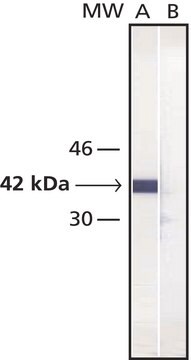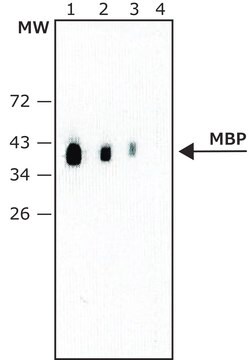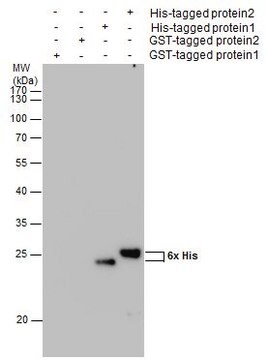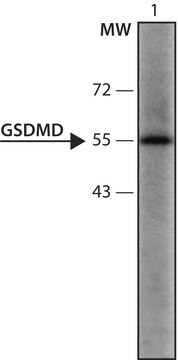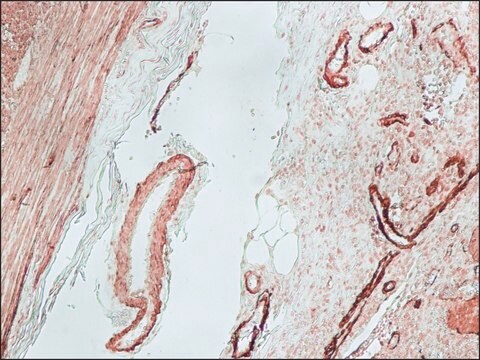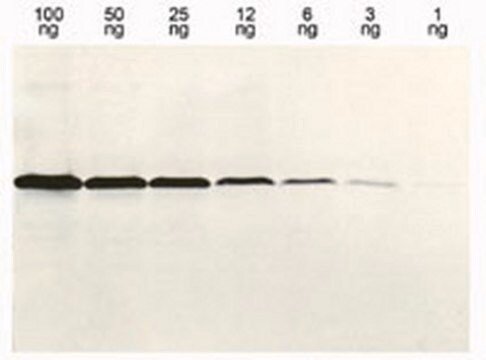M1321
Monoclonal Anti-Maltose Binding Protein antibody produced in mouse
clone MBP-17, purified immunoglobulin, buffered aqueous solution
Synonym(s):
Anti-MBP
About This Item
Recommended Products
biological source
mouse
conjugate
unconjugated
antibody form
purified immunoglobulin
antibody product type
primary antibodies
clone
MBP-17, monoclonal
form
buffered aqueous solution
concentration
~2 mg/mL
technique(s)
dot blot: suitable
indirect ELISA: suitable
western blot: 0.05-0.1 μg/mL using purified recombinant MBP.
isotype
IgG1
shipped in
dry ice
storage temp.
−20°C
target post-translational modification
unmodified
General description
Immunogen
Application
- immunoblotting
- dot blot
- luminometric immunoassay
- enzyme linked immuno sorbent assay (ELISA)
Biochem/physiol Actions
Physical form
Disclaimer
Not finding the right product?
Try our Product Selector Tool.
Related product
Storage Class
10 - Combustible liquids
wgk_germany
nwg
flash_point_f
Not applicable
flash_point_c
Not applicable
ppe
Eyeshields, Gloves, multi-purpose combination respirator cartridge (US)
Certificates of Analysis (COA)
Search for Certificates of Analysis (COA) by entering the products Lot/Batch Number. Lot and Batch Numbers can be found on a product’s label following the words ‘Lot’ or ‘Batch’.
Already Own This Product?
Find documentation for the products that you have recently purchased in the Document Library.
Our team of scientists has experience in all areas of research including Life Science, Material Science, Chemical Synthesis, Chromatography, Analytical and many others.
Contact Technical Service